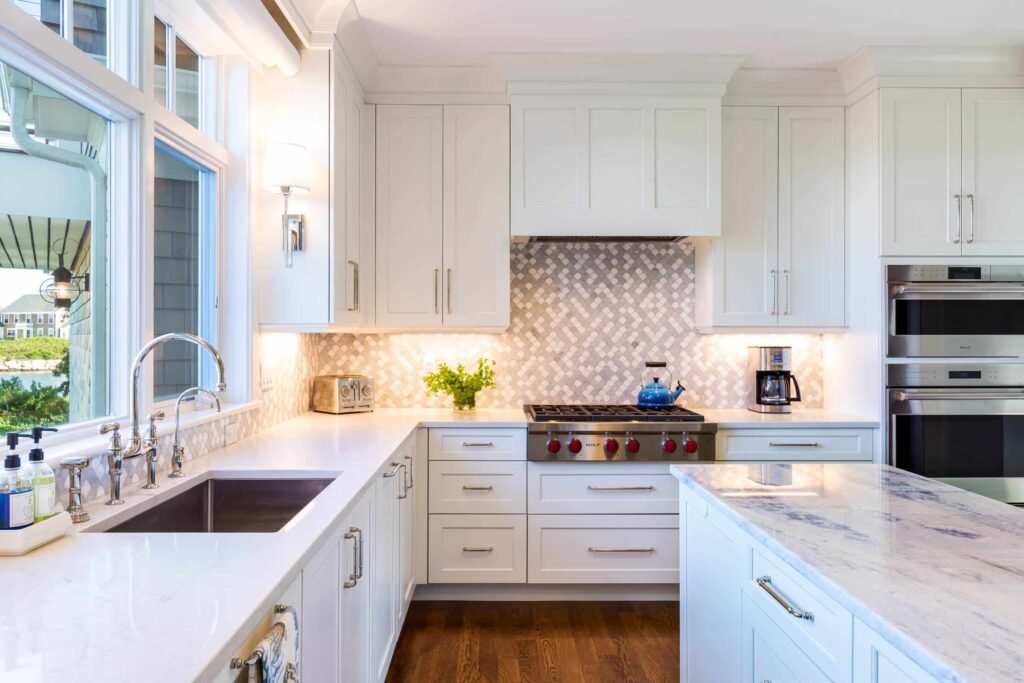The kitchen is often considered the heart of the home, a place where meals are prepared, memories are made, and families gather. Its design plays a crucial role in both functionality and aesthetics. When it comes to kitchen design, selecting the right backsplash to complement your countertops can make a significant difference in the overall look and feel of the space.
From sleek and modern to rustic and cozy, the options for backsplash materials, colors, and patterns are seemingly endless. Here are some tips to help you navigate the process and choose the best backsplash for your kitchen countertops:

1. Consider Your backsplash Material
The first step in selecting a complementary countertop is to consider the material and color of your countertops. For example, if you have marble or granite countertops with intricate veining or bold patterns, you may want to opt for a more subtle backsplash to avoid overwhelming the space. Conversely, if your countertops are solid-colored or understated, you might choose a backsplash with more texture or visual interest to add depth to the design.
2. Think About Balance
Achieving balance in your kitchen design is key. If your countertops are the focal point of the space, you’ll want to choose a backsplash that complements them without competing for attention. Conversely, if you have relatively simple countertops, you can use the backsplash to add a pop of color or create visual interest.
3. Coordinate Colors and Textures with backsplash
While your kitchen doesn’t have to match your countertops exactly, it should harmonize with them in terms of color and texture. Consider selecting a countertop that incorporates some of the colors found in your countertops to create a cohesive look. Similarly, think about the texture of your countertops – if they’re smooth and glossy, you might opt for a backsplash with a matte or textured finish to add contrast.
4. Explore Different Materials
Backsplashes can be made from a wide range of materials, including ceramic tile, glass, stone, metal, and even wood. Each material has its own unique characteristics and aesthetic appeal, so take the time to explore your options and choose one that complements your countertops and suits your personal style. Keep in mind factors like durability, ease of maintenance, and cost when making your selection.
5. Pay Attention to Patterns and Layout
The pattern and layout of your backsplash can also have a significant impact on the overall look of your kitchen. Consider whether you want a simple subway tile layout, a more intricate mosaic pattern, or something in between. Keep in mind the scale of your kitchen and the size of your countertops – a large-scale pattern might overwhelm a small kitchen, while a smaller-scale pattern might get lost in a larger space.
6. Don’t Forget About Grout
Grout may seem like a small detail, but it can have a big impact on the overall look of your countertop. Consider the color of your grout and how it will complement both your countertops and your chosen backsplash material. Darker grout can create a bold contrast and highlight the shape of the tiles, while lighter grout can blend in more seamlessly for a cohesive look.

7. Seek Inspiration from backsplash
Finally, don’t be afraid to seek inspiration from design magazines, websites, and social media platforms like Pinterest and Instagram. Look for kitchens with similar countertop materials or styles to yours and see how they’ve incorporated backsplashes into their designs. Take note of what you like (and don’t like) and use that as a guide to help you make decisions about your own kitchen.
Conclusion
Selecting the perfect backsplash to complement your kitchen countertops is all about balance, coordination, and personal preference. By considering factors like countertop material, color, texture, and layout, exploring different materials and patterns, and paying attention to details like grout color, you can create a cohesive and visually stunning kitchen design that reflects your unique style and personality.

